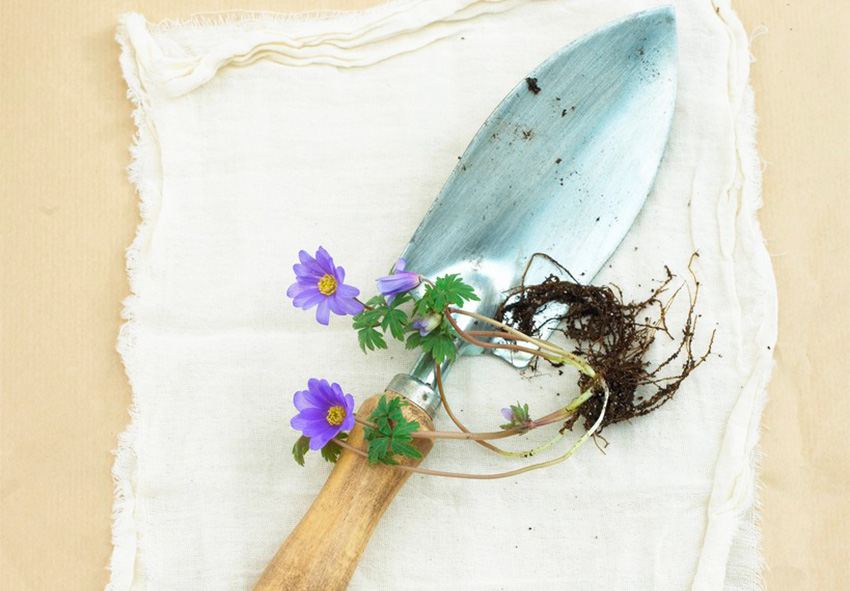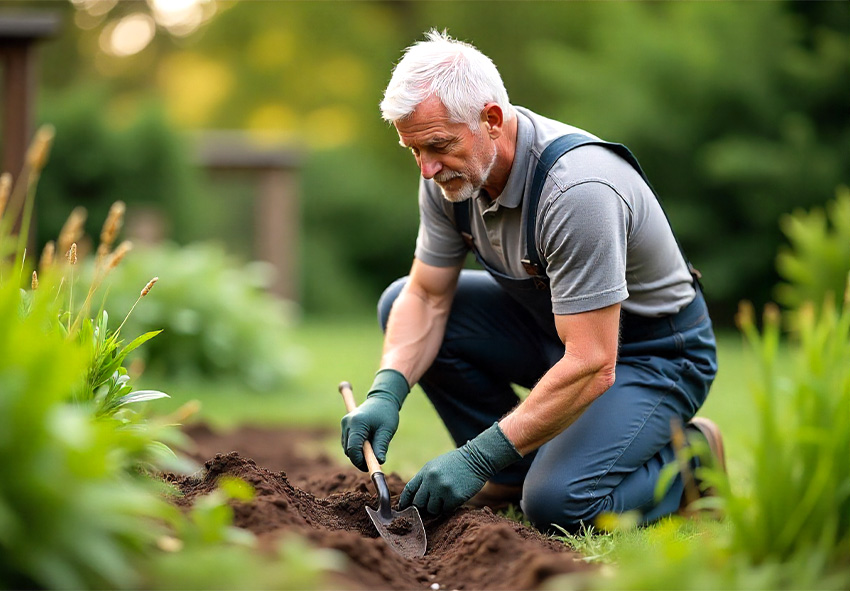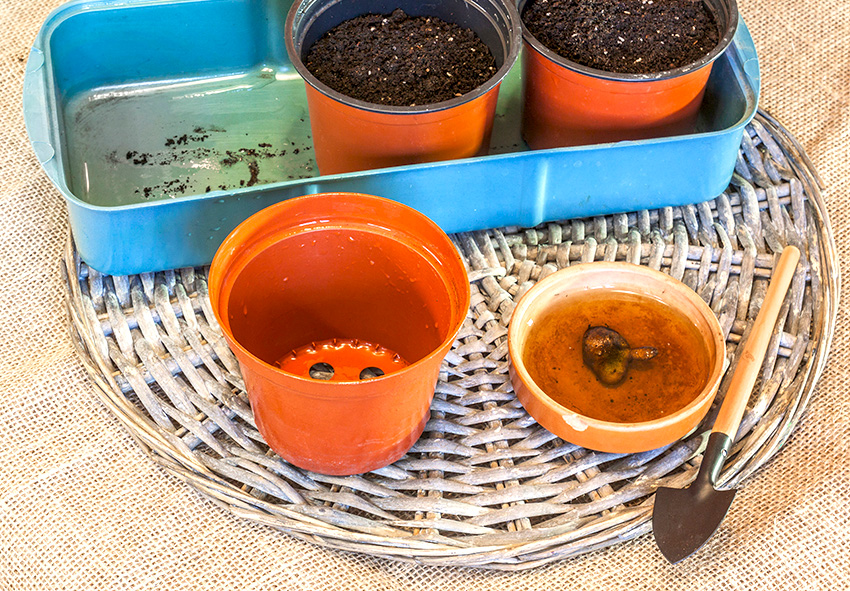Anemones are beloved for their vibrant colors and delicate blooms that brighten up gardens and containers. However, to enjoy their stunning display, it’s crucial to start with proper planting techniques. Understanding the steps of planting anemones ensures strong growth, long-lasting flowers, and a garden filled with seasonal beauty. Our gardening blog is a perfect place to find all the information you need!
Understanding Anemones Before Planting

Anemones grow from corms, often referred to as bulbs, which store the energy needed for their blooms. Unlike seeds, corms allow gardeners to establish plants much faster and with more reliable results. This makes planting anemone bulbs one of the easiest ways to achieve vibrant flower beds.
Best Time to Plant Anemones
The ideal planting time depends on your climate and chosen variety. In colder regions, anemones are usually planted in the fall to bloom in spring, while in warmer areas, planting can also be done in early spring for late-season flowers. Correct timing is key to ensuring a strong and colorful display.
Choosing the Right Location
Anemones thrive in well-drained soil with access to full or partial sunlight. A location with light shade can help extend the bloom period by protecting flowers from excessive heat. When selecting a spot, focus on areas with rich, loose soil where water doesn’t pool.
Preparing Anemone Bulbs for Planting
Before you start planting anemone bulbs, it’s important to prepare them correctly to ensure healthy growth and abundant flowering. Proper preparation helps the bulbs wake from dormancy and establishes strong root systems before blooming begins. Taking a few extra steps at this stage makes a big difference in the success of your anemone planting.
Soaking Corms Before Planting
Before planting anemones, soak the corms in room-temperature water for 3–4 hours. This step rehydrates them, helping jump-start root growth. Skipping this process often results in slower sprouting and weaker plants.
Inspecting and Sorting Bulbs
Not all anemone bulbs are equal in quality. Check for firm, healthy corms without signs of mold or soft spots. Planting only strong bulbs increases the chances of lush growth and abundant flowers.
Preparing the Soil
Soil preparation is essential for anemone bulb planting. Loosen the soil to improve aeration and mix in compost or organic matter for added nutrients. If the soil is heavy clay, add sand or grit to improve drainage and avoid waterlogging.
Step-by-Step Planting Process

Planting anemones may seem simple, but paying attention to details can make a big difference in how well they grow and bloom. Proper planting depth, spacing, and orientation of the bulbs ensure strong roots and healthy flowers. Watering correctly at the start also helps the bulbs settle and thrive. Below are some essential tips to follow for the best results:
- Planting Depth and Spacing: Anemone bulbs (corms) should be planted about 2–3 inches deep, which gives them enough soil cover to protect against temperature fluctuations while still allowing them to sprout easily. Spacing them 3–4 inches apart ensures proper airflow and reduces the risk of disease. For maximum impact, plant bulbs in clusters or drifts rather than single rows, as this creates a bold, natural-looking carpet of flowers in spring.
- Orientation of Bulbs: One of the most common questions about planting anemones is how to orient the corms. Because they don’t always have a distinct “top” and “bottom,” it’s not always easy to tell. If in doubt, planting them on their side is the safest approach. The shoots will naturally grow upward toward the light, ensuring strong development. This method also minimizes the chance of planting upside down, which can delay or weaken growth.
- Watering Right After Planting: Once your bulbs are in the ground, watering is critical for helping the soil settle firmly around the corms. A deep soak encourages initial root growth, but it’s important not to let the soil become waterlogged. Anemones prefer evenly moist soil, especially during the first few weeks as roots establish. Regular monitoring is recommended—if the soil feels dry an inch below the surface, it’s time to water again. Using mulch can also help retain moisture and create a stable growing environment.
Tips for Successful Anemone Planting
Beyond the basic planting steps, there are a few tricks that can help maximize your results. Small adjustments, such as choosing the right planting method or staggering your planting schedule, can make your garden bloom longer and look more impressive. These tips will help you get the most out of your anemone bulb planting efforts.
Staggered Planting for Longer Blooming
For an extended flowering period, try staggered planting. By planting small groups of bulbs every 2–3 weeks, you can enjoy continuous blooms over a longer season. This technique is especially effective in milder climates.
Planting in Pots vs. Garden Beds

Anemones grow well in both garden beds and containers. Planting in pots allows for mobility and easy rearrangement, while beds provide a natural spread and mass blooming effect. Both options can create a stunning display if soil and light conditions are met.
Popular Species to Consider
When creating garden design with anemones, choosing the right species can make a big difference in the overall look and blooming season of your garden. Each variety comes with its own charm — whether it’s bold colors, delicate shapes, or naturalizing habits. Below are some of the most popular anemone species that gardeners love to grow:
- Anemone blanda (Grecian Windflower) – Known for its daisy-like blooms in shades of blue, pink, and white, this early spring bloomer is perfect for rock gardens and naturalistic plantings.
- Anemone coronaria (Poppy Anemone) – Famous for its striking, poppy-like flowers in bold reds, purples, and blues, making it a favorite for cut flowers and vibrant displays.
- Anemone nemorosa (Wood Anemone) – A delicate woodland species with white or pale pink blooms, ideal for shady borders or under trees.
- Anemone hupehensis (Japanese Anemone) – A late-summer to autumn bloomer that adds elegance with its tall stems and soft pink or white petals.
- Anemone sylvestris (Snowdrop Anemone) – Early blooming with fragrant white flowers, this species spreads gently and works well as ground cover.
Conclusion
Planting anemones is a rewarding process that transforms your garden with color and elegance. By preparing the bulbs, choosing the right site, and following step-by-step planting instructions, you ensure a thriving display. With these simple methods, your anemone bulb planting efforts will pay off in vibrant, long-lasting flowers season after season!
Frequently Asked Questions (FAQs) about Planting Anemones
1. When is the best time to plant anemone bulbs?
The best time to plant anemone bulbs is in the fall for spring blooms or in late winter/early spring in milder climates. Planting at the right time ensures proper root development and vibrant flowering. Always check your climate zone before deciding when to plant.
2. How deep should I plant anemone bulbs?
Anemone bulbs should generally be planted about 2–3 inches deep, with 3–4 inches of space between each tuber. Proper depth is important to protect the bulbs from frost while still allowing them to sprout easily. Planting too shallow may expose them to weather damage.
3. Can I order anemones bulbs from your online store?
We’re pleased to offer Anemones for purchase through our online store Dutch-bulbs.com. Simply browse our store, choose your favorite Anemone varieties, and follow the easy ordering process to have them delivered to your doorstep, ready for planting.
4. How long does it take for anemones to bloom after planting?
After planting, anemones usually take 2–3 months to bloom, depending on the variety and growing conditions. Fall-planted anemones bloom in early to mid-spring, while some species planted in spring flower later in the season. Regular watering supports timely blooming.
5. Can I grow anemones in containers?
Yes, anemones can be successfully grown in containers, provided the soil drains well. Use a quality potting mix and ensure your container has drainage holes. Container-grown anemones are great for patios, balconies, or adding bursts of color to small garden spaces.
Published: 26.08.2025
